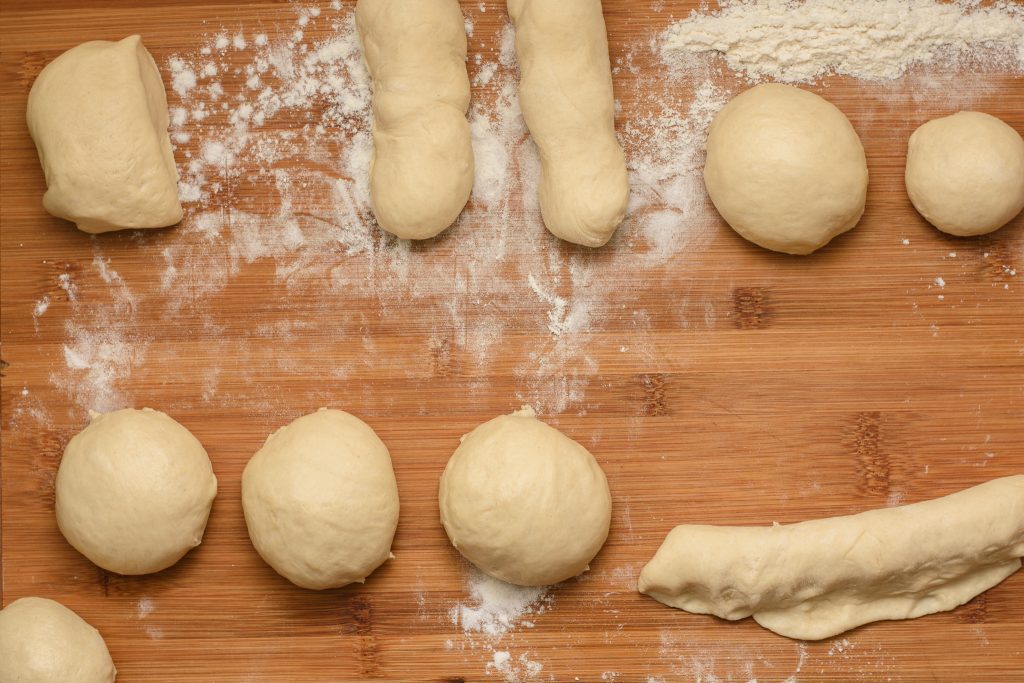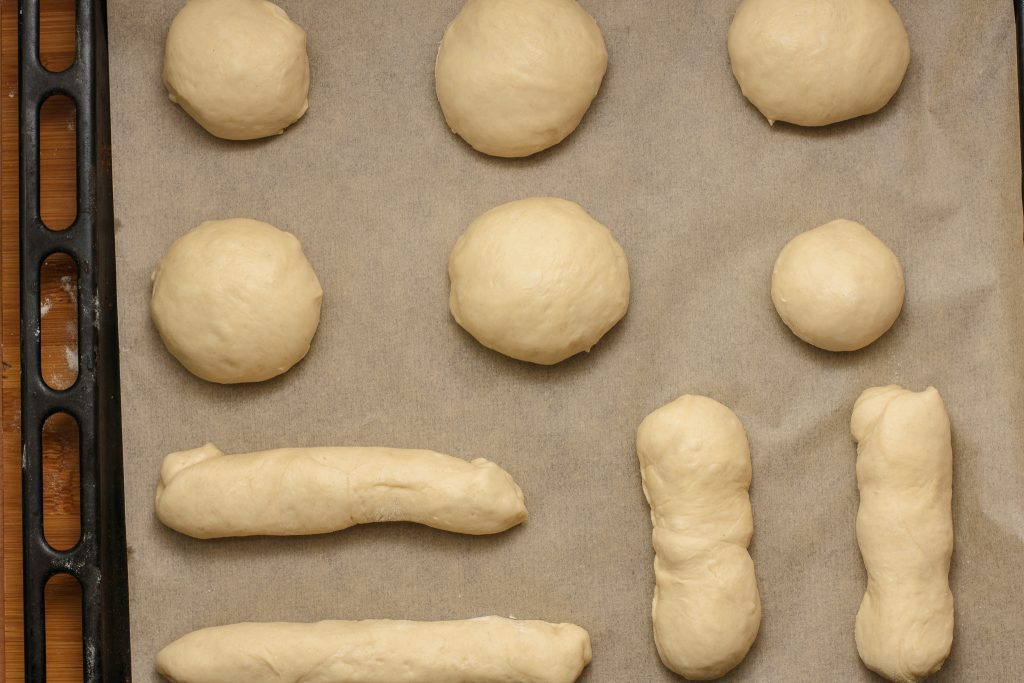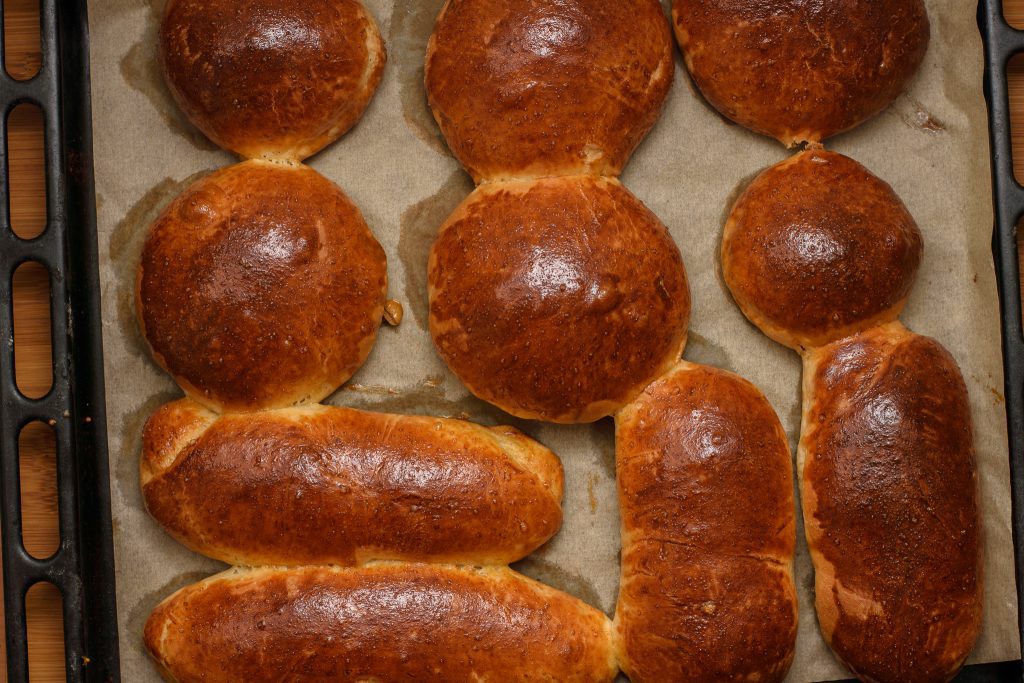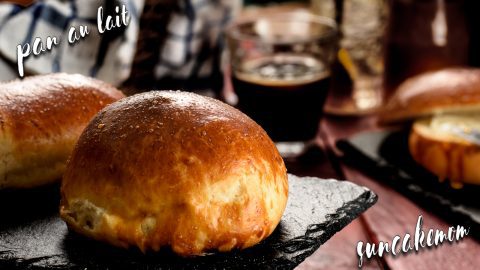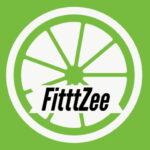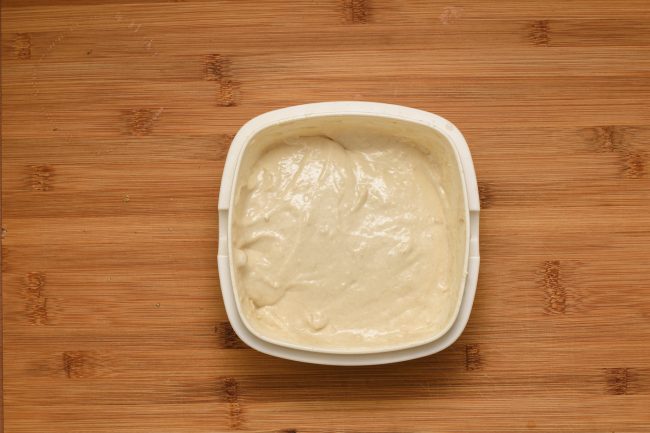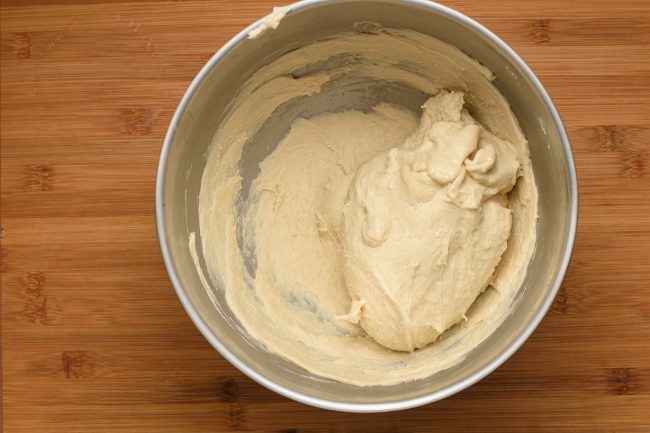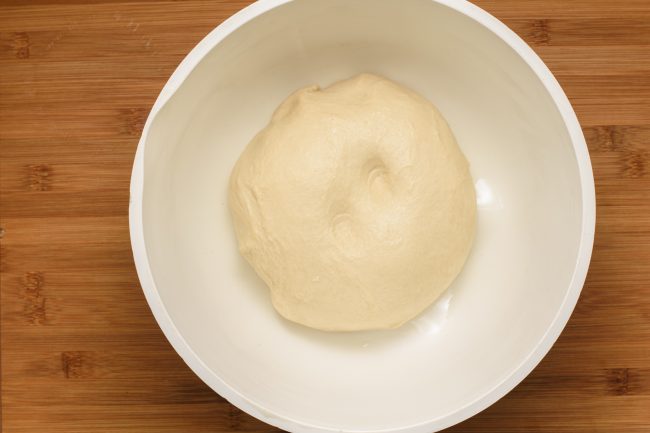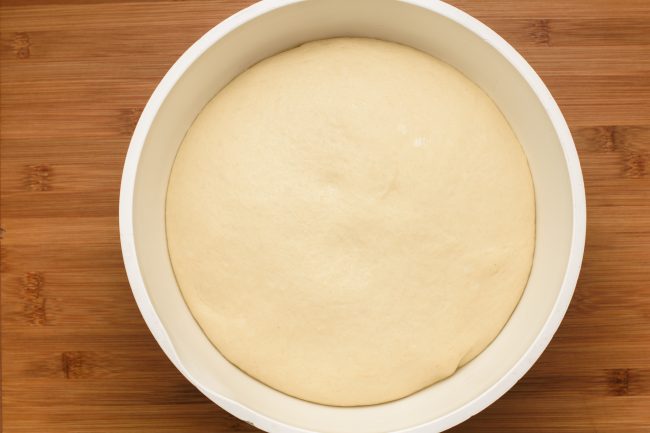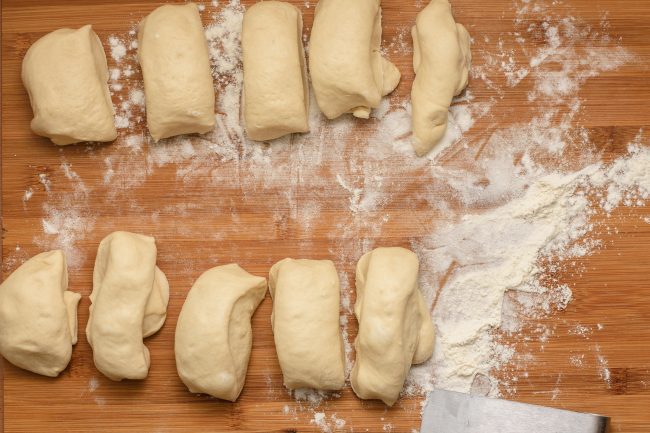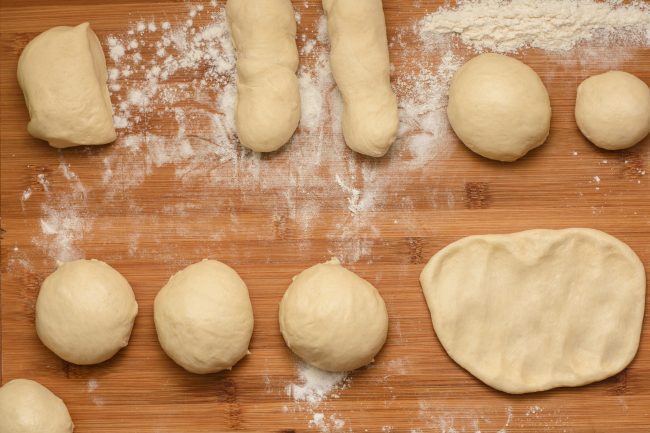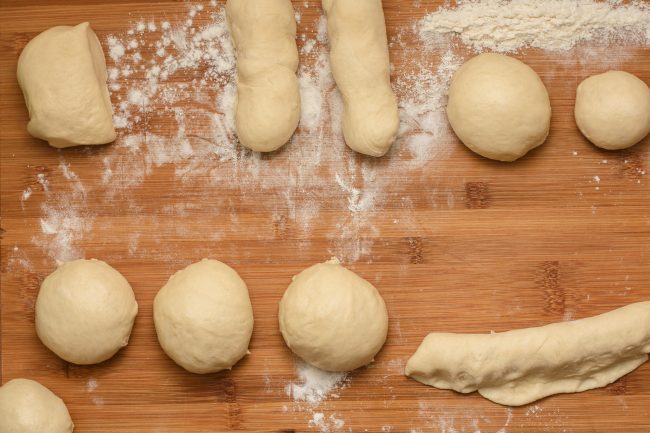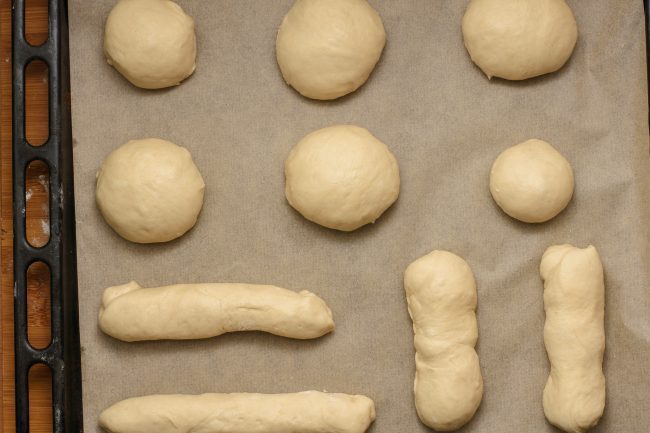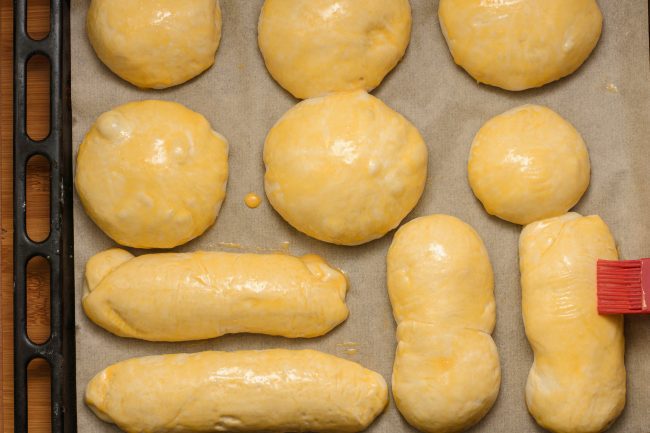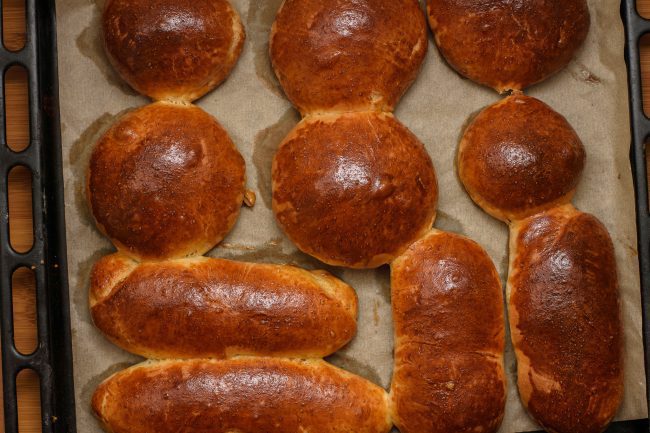A bread that’s different, yet it’s the same? Check out this Pan Au Lait recipe to find something familiar under a different name!
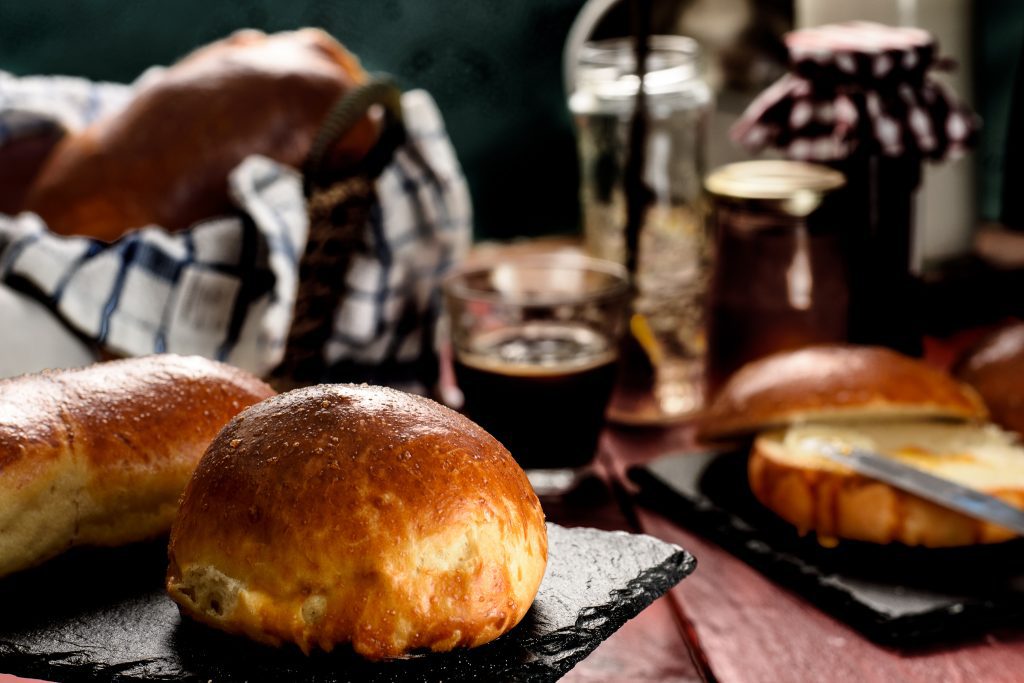
Pan au lait is French for Milk bread. Although there are a myriad of possibilities how milk with bread could be made Pan au lait refers to the making Bread with milk instead of water or any other liquid.
We may find similarities across the spectrum of baked goods to Pan Au Lait, sometimes even indistinguishable ones like in the case of Brioche but these similarities aren’t a coincidence rather consequences of how these goods are made.
Basically, Pan Au Lait is the most basic form of sweet bread, replacing water with protein and fat filled milk. With the fat coating the gluten molecules, it’s changing their ability of snugly connect to one another creating a bit crumblier texture that we all love so much in sweet breads.
Depending on what we plan to do with our Pan Au Lait whether we want to use it for sandwiches, sweet snacks or just on its own, additional sweetener may be required but not strictly necessary.
Once we make our first batch, the inevitable realization of familiarity with already well known favorites, like brioche, braided bread or challah will hit us fair and square.
The question is that how we’ll see our favorites in the light of our newfound knowledge. Will we still see them as something unique that is worth our trust and praise or we’ll just frown at them like sad imitations of the original.
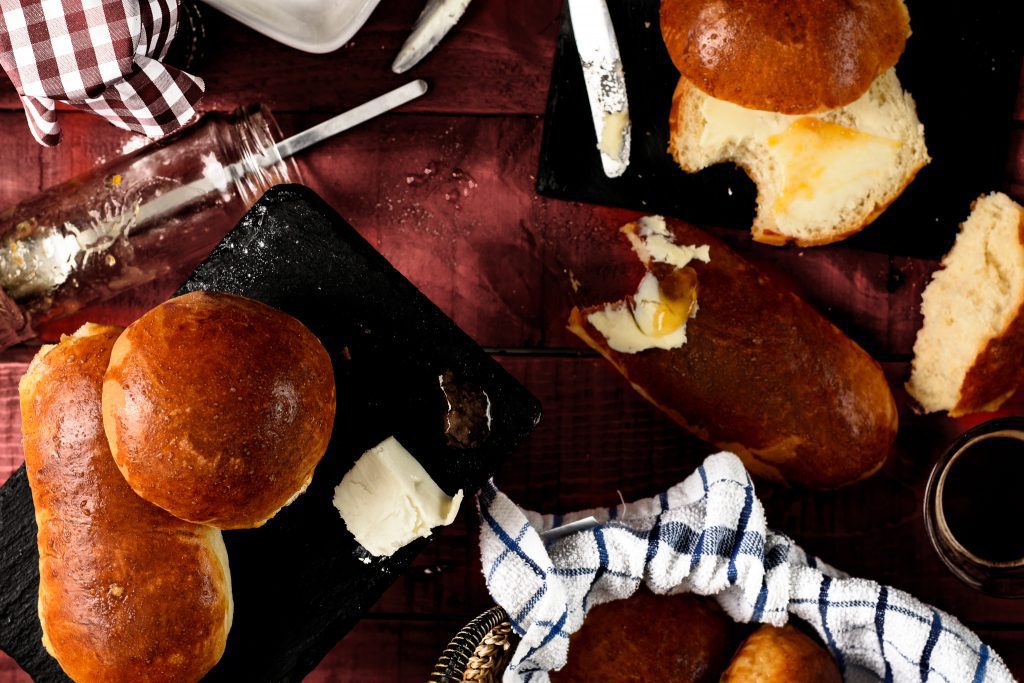
Ingredients
Starter
- ¾ cup / 100g Flour
- ¾ cup / 100g Milk
- 1 teaspoon / 5g Fresh yeast
Dough
- 3½ cup / 400g Flour
- 5 tablespoons / 75g Butter (softened or melted)
- 2 teaspoons / 10g Salt
- 1 teaspoon / 5g Fresh yeast
- 1 medium / 50g Egg
- 2 tablespoon / 40g Honey
- ⅔ cup / 150g Milk
- 1 medium / 50g Egg for eggwash (yolk only for darker color )
How to make Pan Au Lait
- Mix flour, milk and yeast together, cover it, then put in the fridge for about 6 hours. If short on time, just leave it on the countertop for 60 – 90 minutes until it doubles. Although it won’t develop a sourdough like flavor, many of us yearns for, it will be fine.

- Knead the starter with flour, butter, salt, fresh yeast, egg, honey and milk until a uniform smooth and elastic texture is achieved.

- Form a ball from the dough and put it into a big, preferably plastic bowl that has a lid. Alternatively a moist kitchen cloth or cling foil would do as a cover, the point is, not letting the surface of the dough to dry out.

- Place the dough into a 68°F – 81°F /20°C – 27°C corner to raise, about 45 – 90 minutes.

- Turn the dough onto a floured work surface and divide it into desired sized chunks. We’ll let the dough raise again and it will also grow during baking so expect some volume increase. Start with 2.2oz / 65g sized chunks and adjust if necessary.

- Roll the dough into balls.
 Check out: How to roll
Check out: How to roll - Or flatten them a bit then roll them up for an elongated bun.

- Once ready, cover the balls and buns with a slightly moist kitchen towel then place them into a 68°F – 81°F /20°C – 27°C corner to raise, about 30 – 60 minutes.

- Brush them with eggwash.

- Place the Pan Au Laits into the middle rack of a 350°F / 180°C preheated oven until internal temperature reaches 210°F / 99°C and the top turns deep golden brown, about 20 – 40 minutes.

Enjoy!
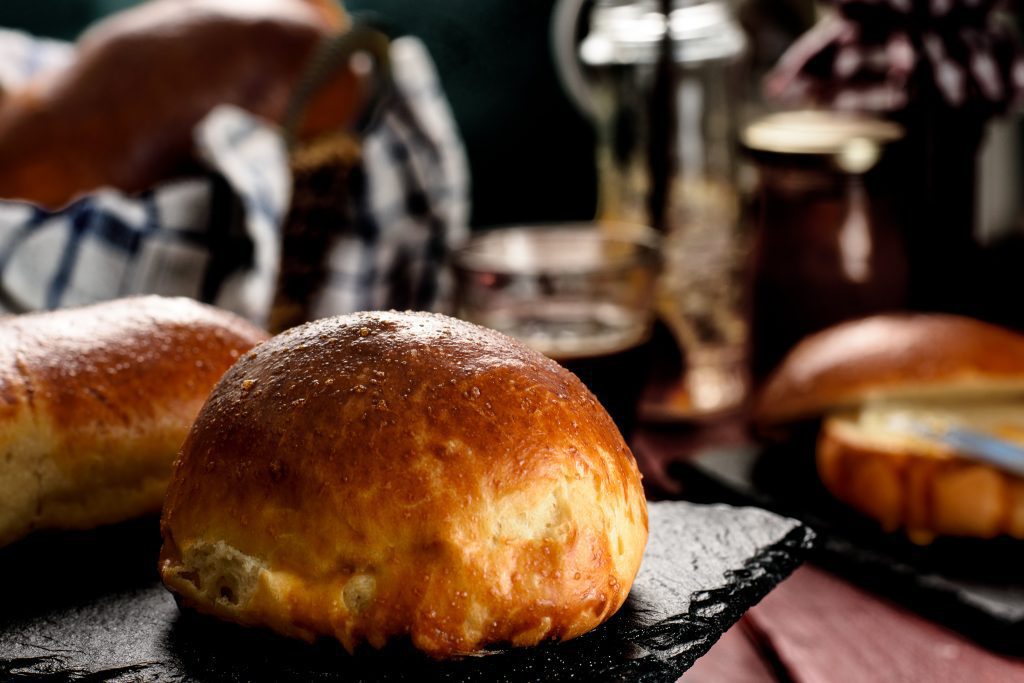
Pain Au Lait Recipe – French Milk Bread
Ingredients
Starter
- ¾ cup Flour
- ½ cup Milk
- 1 teaspoon Fresh yeast
Dough
- 3½ cup Flour
- 5 tablespoons Butter softened or melted
- 2 teaspoons Salt
- 1 teaspoon Fresh yeast
- 1 medium Egg
- 2 tablespoon Honey
- ⅔ cup Milk
- 1 medium Egg for egg wash yolk only for darker color
Instructions
Starter
- Mix flour, milk and yeast together, cover it, then put in the fridge for about 6 hours. If short on time, just leave it on the countertop for 60 – 90 minutes until it doubles. Although it won’t develop a sourdough like flavor, many of us yearns for, it will be fine.

Dough
- Knead the starter with flour, butter, salt, fresh yeast, egg, honey and milk until a uniform smooth and elastic texture is achieved.

- Form a ball from the dough and put it into a big, preferably plastic bowl that has a lid. Alternatively a moist kitchen cloth or cling foil would do as a cover, the point is, not letting the surface of the dough to dry out.

- Place the dough into a 68°F – 81°F /20°C – 27°C corner to raise, about 45 – 90 minutes.

- Turn the dough onto a floured work surface and divide it into desired sized chunks. We'll let the dough raise again and it will also grow during baking so expect some volume increase. Start with 2.2oz / 65g sized chunks and adjust if necessary.

- Roll the dough into balls. Check out: How to roll

- Or flatten them a bit then roll them up for an elongated bun.

- Once ready, cover the balls and buns with a slightly moist kitchen towel then place them into a 68°F – 81°F /20°C – 27°C corner to raise, about 30 – 60 minutes.

- Brush them with eggwash.

- Place the Pan Au Laits into the middle rack of a 350°F / 180°C preheated oven until internal temperature reaches 210°F / 99°C and the top turns deep golden brown, about 20 – 40 minutes.

Notes
Nutrition
Pin now, Enjoy later!

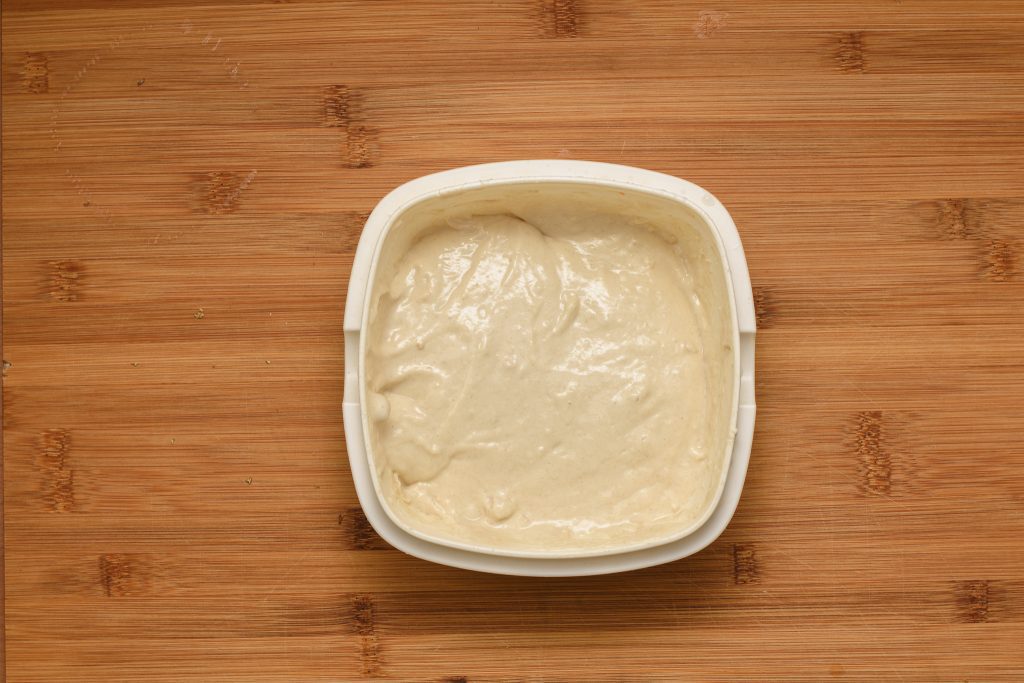

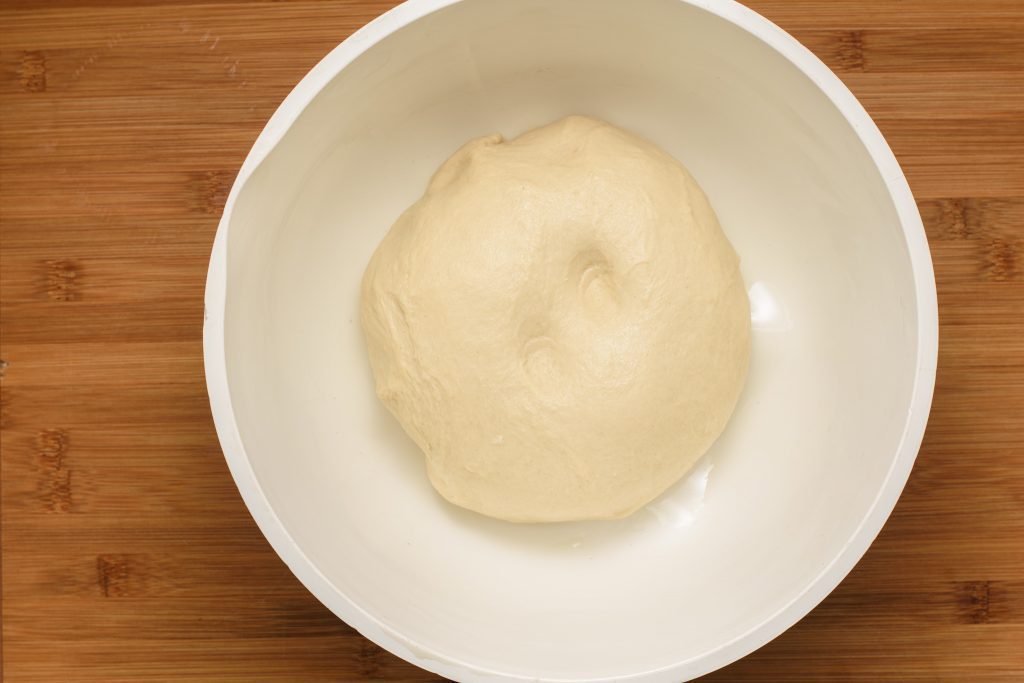
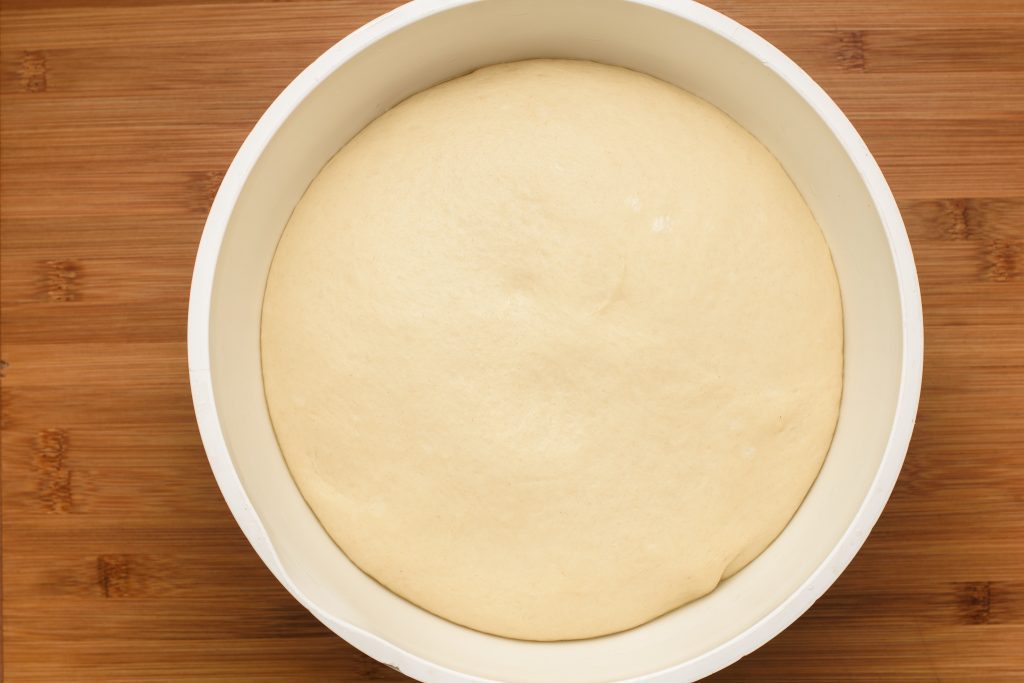
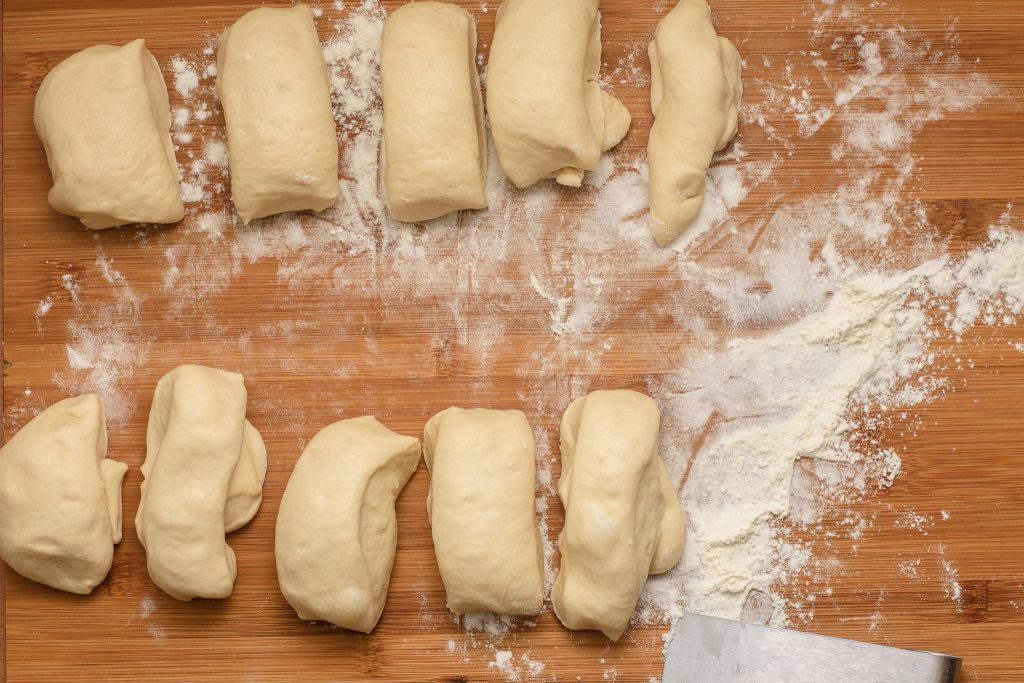
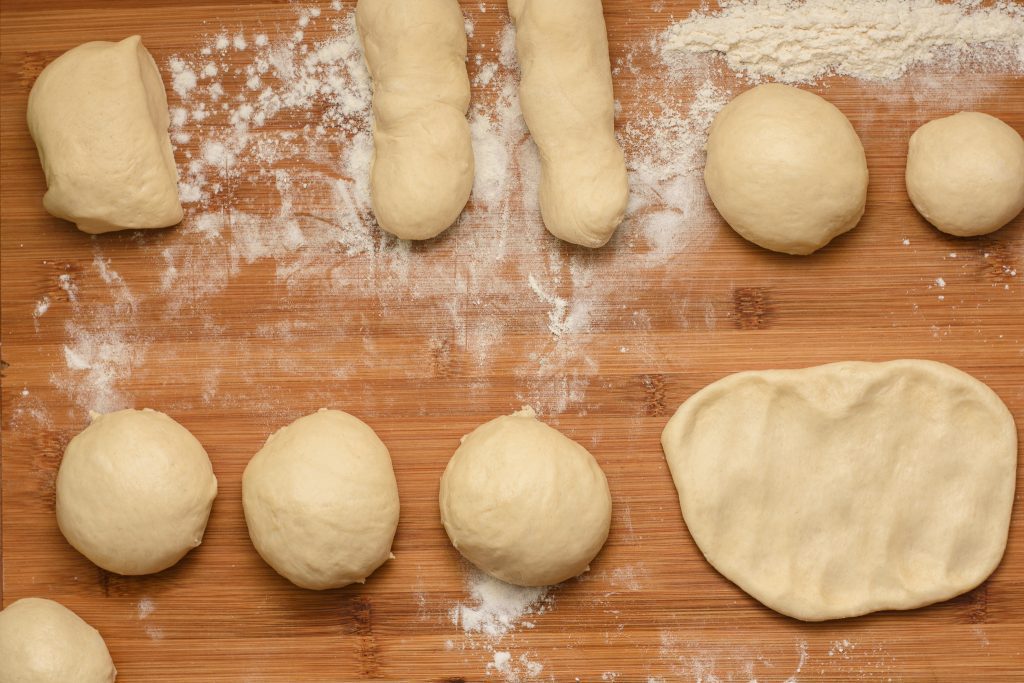 Check out:
Check out: 